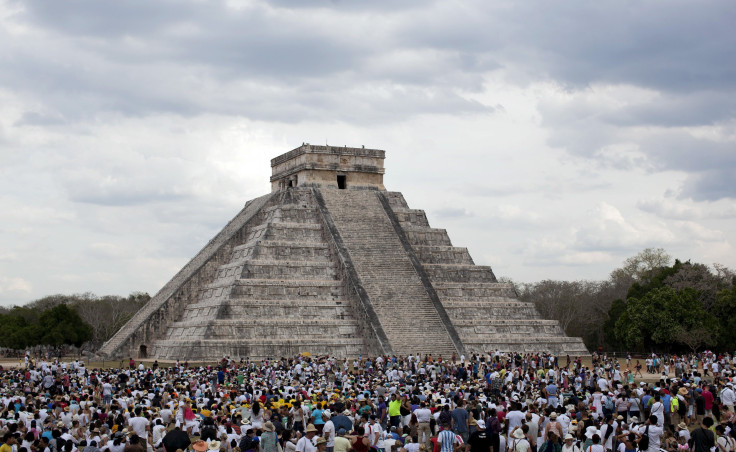Canadian boy William Gadoury may have discovered an ancient Mayan city; Constellation study criticised as ‘a mess’ and ‘junk science’

Young scientist William Gadoury form Canada developed a passion for the ancient Mayan civilisation after reading Mayan doomsday prophesies in 2012. His breakthrough came when he combined old-world astronomy with modern technology to discover a fascinating, long-forgotten Maya city in a dense Central American forest. The Quebec boy claimed that he analysed 22 Mayan constellations after realising that Mayans aligned their 117 cities according to position of stars.
“I did not understand why the Maya built their cities away from rivers, on marginal lands and in the mountains. They had to have another reason, and as they worshipped the stars, the idea came to me to verify my hypothesis. I was really surprised and excited when I realised that the most brilliant stars of the constellations matched the largest Maya cities,” Gadoury told Journal de Montreal.
Gadoury cannot wait to visit his discovery. The dense forest that hosts this ancient forgotten city has not been explored yet. The youngster has named the city K’aak Chi, which means Mouth of Fire. It is believed that the city was one of five largest Mayan cities. The discovery has brought praise and acclaim from NASA and space agencies from Japan and Canada. He has become Quebec’s local hero.
“A square is not natural, it is mostly artificial and can hardly be attributed to natural phenomena. If we add these together, we have a lot of indication there might be a Mayan city in the area,” Daniel de Lisle, Canadian Space Agency liaison officer, told The Independent.
He added that Gadoury’s project is “fascinating” because of the depth of his research. He said that the linking of the stars to the location of a long-lost city using satellite images on a small territory was pretty exceptional. If Gadoury’s calculation and theories are proved correct, that would mean the city is located in a remote coastal location on the Yucatán Peninsula in Mexico. While going through the Mayan constellations, he realised that there was one star that in a constellation that didn’t have a corresponding city.
However, not everybody is convinced about Gadoury’s discovery, especially his methods. Anthropologist David Stuart from The Mesoamerica Center-University of Texas in the US has said that “the whole thing is a mess.” He has compared the find to “junk science hitting the internet in free-fall.”
According to Stuart, ancient Mayans never plotted their cities based on constellations.
“Seeing such patterns is a rorschach process, since sites are everywhere, and so are stars ... The square feature that was found on Google Earth is indeed man-made, but it’s an old fallow cornfield, or milpa,” Stuart wrote on his Facebook page.






